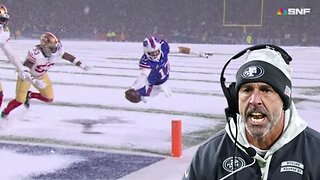Premium Only Content

Top-Down Analysis with Market Structure – A to Z Guide for Price Action Trading
Top-Down Analysis with Market Structure – A to Z Guide for Price Action Trading
टॉप-डाउन एनालिसिस और मार्केट स्ट्रक्चर A से Z | प्राइस एक्शन ट्रेडिंग
Top-Down Analysis with Market Structure – A to Z Guide for Price Action Trading
Top-down analysis is a powerful method in price action trading that helps traders identify high-probability trade setups by analyzing multiple timeframes, starting from the higher timeframes down to the lower ones. This approach ensures that traders align their trades with the overall market trend and structure.
---
1. What is Top-Down Analysis?
Top-down analysis is a method where traders start analyzing the market from the higher timeframe (HTF) and then work their way down to lower timeframes (LTF) to refine entries and exits. It helps in:
Identifying the overall trend direction.
Spotting key supply and demand zones.
Finding confluences across multiple timeframes.
Avoiding low-probability trades against the trend.
---
2. Understanding Market Structure
Market structure refers to the way price moves in an organized manner, creating trends and reversal points. The three main types of market structures are:
A. Bullish Market Structure (Uptrend)
Higher Highs (HH) and Higher Lows (HL).
Price is continuously making new highs.
Ideal for looking for buy opportunities.
B. Bearish Market Structure (Downtrend)
Lower Lows (LL) and Lower Highs (LH).
Price is continuously making new lows.
Ideal for looking for sell opportunities.
C. Ranging/Sideways Market
No clear trend, price moves between support and resistance.
Best suited for range trading strategies.
---
3. Step-by-Step Guide to Top-Down Analysis
Step 1: Identify the Higher Timeframe Trend (HTF)
Use the Monthly (MN), Weekly (W1), and Daily (D1) timeframes.
Identify major support & resistance levels, trendlines, and market structure.
Determine whether the market is in an uptrend, downtrend, or range.
Step 2: Mark Key Supply & Demand Zones
Supply zones (resistance) are areas where price previously reversed down.
Demand zones (support) are areas where price previously reversed up.
Look for strong price reactions in the past.
Step 3: Move to the Mid-Timeframe (MTF) for Refinement
Use the 4-Hour (H4) or 1-Hour (H1) charts to refine the structure.
Look for continuation patterns (flags, pennants, breakouts).
Identify market structure shifts (higher lows or lower highs).
Step 4: Drop to the Lower Timeframe (LTF) for Entries
Use 15-Min (M15) or 5-Min (M5) for precise entries.
Look for price action confirmation (candlestick patterns, break-and-retest setups).
Use indicators like the 200 EMA for trend direction confirmation.
---
4. Price Action Trading Techniques for Top-Down Analysis
A. Break and Retest Strategy
Wait for price to break a key level.
Enter on the retest with a confirmation candle (pin bar, engulfing).
B. Order Block & Liquidity Grab
Identify institutional order blocks on HTFs.
Look for liquidity grabs before price moves in the intended direction.
C. Fibonacci Retracement for Confluence
Use the Fibonacci retracement tool to find confluence with key levels.
61.8% and 78.6% levels are high-probability zones for reversals.
D. Market Structure Shift (MSS)
A shift in market structure indicates potential reversals.
Watch for a break in previous highs/lows for confirmation.
---
5. Risk Management & Trade Execution
Always use stop-losses based on structure.
Risk only 1-2% per trade.
Use a risk-reward ratio of at least 1:2 or higher.
Avoid trading against the trend unless there is a strong reversal signal.
---
6. Example of a Full Top-Down Analysis
1. Higher Timeframe (Daily/Weekly)
Identify overall trend (Bullish).
Mark major support/resistance levels.
2. Mid-Timeframe (H4/H1)
Confirm trend continuation or potential reversal.
Look for price action signals like breakouts or trendline bounces.
3. Lower Timeframe (M15/M5)
Find optimal entry based on price action.
Enter on confirmation (break and retest, engulfing candle).
---
Final Thoughts
-
 LIVE
LIVE
Timcast
41 minutes agoDAN BONGINO Named Deputy FBI Director Under Kash Patel, Deep State & Dem IN PANIC | Timcast LIVE
10,621 watching -
 LIVE
LIVE
Steven Crowder
1 hour ago🔴 Trump Drops a Bombshell: Bongino’s FBI Takeover & Crowder in Germany Exclusive
66,584 watching -
![🔴[LIVE TRADING] Bounce or Bust?! || The MK Show](https://1a-1791.com/video/fwe2/ad/s8/1/c/n/q/f/cnqfy.0kob-small-The-MK-Show-Feb.-24th.jpg) LIVE
LIVE
Matt Kohrs
13 hours ago🔴[LIVE TRADING] Bounce or Bust?! || The MK Show
1,705 watching -
 37:11
37:11
BonginoReport
4 hours agoDan Bongino is Leaving (Ep.146) - 02/24/2025
83.6K307 -
 LIVE
LIVE
Wendy Bell Radio
5 hours agoThe MAGA Diet
13,584 watching -
 DVR
DVR
Graham Allen
2 hours agoGRAHAM MAKES YUGE ANNOUNCEMENT!! + LIBERAL REP ROOTING AGAINST AMERICA?!
18.2K40 -
 LIVE
LIVE
Randi Hipper
45 minutes agoETHEREUM PRICE BOUNCES AFTER BILLION DOLLAR HACK!
110 watching -
![Massive Paradigm Shift: Bongino Hired At FBI; Joy Reid Fired At MSBNC [EP 4450-8AM]](https://1a-1791.com/video/fwe1/52/s8/1/u/2/_/e/u2_ey.0kob-small-Massive-Paradigm-Shift-Bong.jpg) LIVE
LIVE
The Pete Santilli Show
15 hours agoMassive Paradigm Shift: Bongino Hired At FBI; Joy Reid Fired At MSBNC [EP 4450-8AM]
2,447 watching -
 1:27:17
1:27:17
Game On!
14 hours ago $2.37 earnedAnother Monday without football...
22.5K8 -
 LIVE
LIVE
Jeff Ahern
2 hours agoMonday Madness with Jeff Ahern (Ding Dong the Witch is Gone!)
584 watching